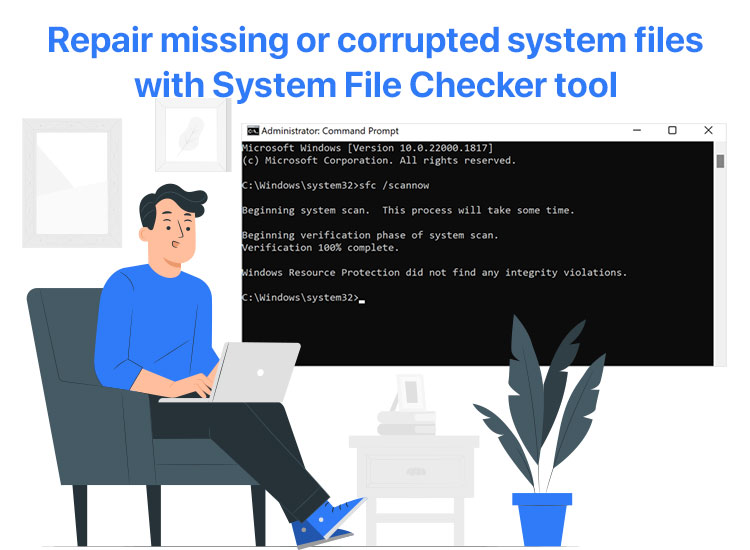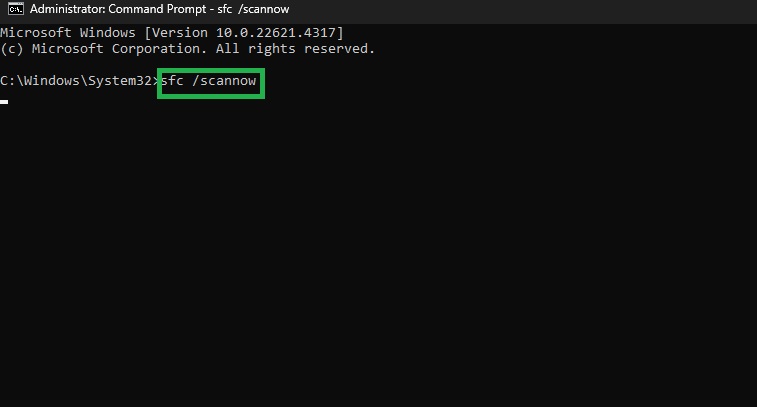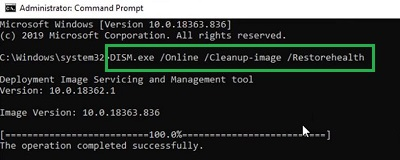
While Windows is a relatively error-free and intelligent operating system, it is not immune to problems like corrupted or missing Windows system files. Hence, it boasts a built-in tool called the System File Checker (SFC) to perform file repair in Windows, fixing issues such as system instability, unexpected crashes, or malfunctioning Windows features that may result from damaged system files.
But what is this file checker tool to repair missing and corrupted files in Windows, and when and how should you use it? Let us answer all these questions in this complete Windows System File Checker Tool guide.
What Is the System File Checker Tool
The System File Checker tool (SFC) is a command-line tool or CMD tool. It is built into the Windows operating system and scans critical system files for corruption.
A Windows system file is a critical file related to your computer’s operating system. These files are necessary for your computer to function properly. Putting it in different words, these files are core files that keep your system running the way it is supposed to.
Over time, the Windows system files may get corrupted (due to reasons like PC crashes, sudden power outages, power surges, Windows update errors, malware attacks, and hard disk issues). When these files become corrupted, your computer will not be able to use them, and your computer’s performance may suffer.
Hence, it is essential to repair corrupted files to prevent more serious issues like the blue screen of death or black screen of death.
The System File Checker tool in Windows checks all individual system files against a known trusted file version of the same files stored in a protected Windows File Protection (WFP) folder cache. If the file systems do not match the WFP version, SFC labels them as corrupt files and tries to replace them with a clean copy.
However, when SFC fails to fix these files, another command called DISM, or Deployment Image Servicing and Management, can be used to check the whole system condition against a clean copy or “image” of the operating system stored online or locally. If DISM finds missing or corrupted files in the current system, it replaces them from the clean system image.
So, when to use the SFC and DISM system file checkers? Let us answer this question next.
When to Use the System File Checker Tool
SFC, or the System File Checker, is the first step in solving minor problems with individual system files. You can use it in the following situations.
- After the Windows update to fix the errors or conflicts that damage the system files
- Before troubleshooting to rule out problems with system files
- When your system exhibits random errors, crashes, or unexpected behavior
When SFC does not work, you can use the DISM command to repair corrupted system files to fix more serious problems with the system. Moreover, the DISM command is also helpful in fixing the underlying Windows image before running the SFC tool and fixing the Windows component store errors.
So, how to use the System File Checker tool to repair missing or corrupted system files? Well, learning the same is our next agenda.
Also know: What Are Prefetch Files and How to Delete Them in Windows PC
How to Repair Files in Windows with the System File Checker Tool
You can follow the steps below to repair corrupted files and missing files using the SFC and DISM tools on your computer.
- First, type Command Prompt in Windows search and right-click on the first search result.
- Second, choose Run as administrator from the on-screen context menu.
- If prompted, give the necessary permissions to open Command Prompt as an administrator.
- Next, type or copy and paste the sfc /scannow command in the command line and press Enter.

- You are good to go if your problem is resolved. However, if the issue remains unresolved, type or copy and paste the DISM.exe /Online /Cleanup-image /Restorehealth command in the Administrator Command Prompt and press Enter.

- Again, copy and paste the sfc /scannow in the Command Prompt window and press Enter to ensure all issues are resolved.
- Lastly, restart your computer to complete the system file checking and repairing process.
Also know: What is a BAK File and How do I Open it on Windows?
System File Checker Tool Guide: The Conclusion
That is how you can run the System File Checker tool (SFC) and, if it fails, the DISM command to repair missing and corrupted files and fix other problems. Hopefully, this article will help you fix issues on your computer. However, if you have any questions, donuts, concerns, feedback, or suggestions about this article, please feel free to leave them in the comments section below.

